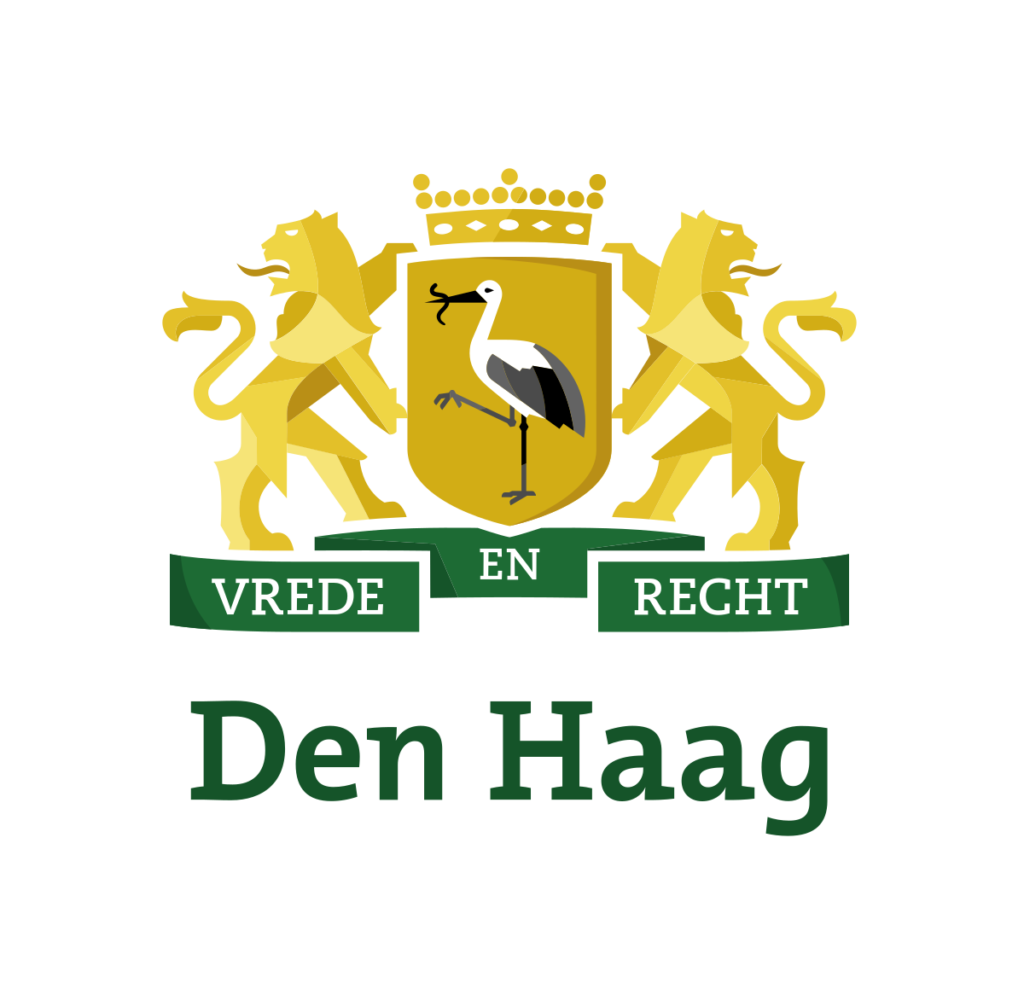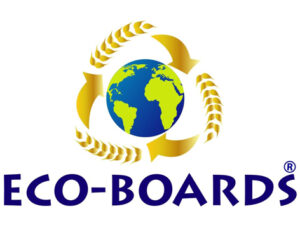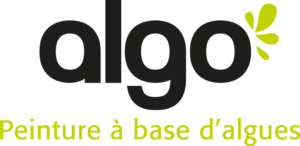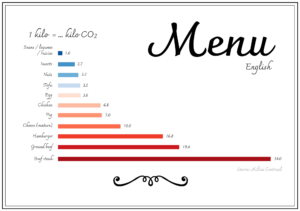
Je voetafdruk
Je voetafdruk
What do you know about the climate in The Hague? And how can we work on a better climate together? Discover it in the Klimaatmuseum (Climate Museum)!
Images: the warming stripes, showyourstripes.info.
When
Where
Atrium, Spui 70, The Hague
Access
Free
Also check out the entire program of The Hague Climate Week here.

The Klimaatmuseum works as sustainable as possible: we carefully choose materials and transportation, and we print mindfully. Also, our installations are modular, so we can use them more than once.
For this pop-up exhibition we worked with printing company De Toekomst, ECO-Boards panels and Algo paints.



ECO-Boards® panels are not made from wood, but from garden and agricultural residue, such as straw and reed. The plates are bonded with more than 95% natural glue from cellulose fibers and do not contain any toxic substances. They are 100% recyclable and a sustainable alternative to OSB and MDF.
Algo is ecological paint based on… algae. The paint is produced in Bretagne from start to finish and consists of 98% natural ingredients. A nice, sustainable alternative to petroleum-based paint. Algo paint is non-toxic and therefore does not harm the air quality.
Of course, there are always some dilemmas. For example, the world map had to be very robust, which is why it was made of less sustainable plates. But it is modular and the removable stickers make that we can easily reuse it. Unfortunately, there are no charging stations for electric transportation near the Atrium, so we organised the transport with a diesel bus from Amsterdam to The Hague.
A. 0 meters
B. 1 meter
C. 1.2 meters
B = correct
The Hague is surrounded by dunes and dikes, so the chance of a flood is still very small. But due to global warming the risk of a flood is increasing. If global warming hits 2 degrees, sea levels in the Netherlands could rise by 1 to 2 meters in 2100.
Check overstroomik.nl to see how high the water will be in your area.
A. Bingoal (ADO) Stadium
B. Paard
C. Central Station
A = correct
There are a whopping 2,900 solar panels on the stadium. They generate approximately 600,000 kWh of green energy annually. This is equivalent to the electricity consumption of 200 households and is approximately 50% of the football club’s annual electricity consumption.
B > fun fact
Paard , The Hague’s pop music temple (litterally ‘horse’), may not have the most solar panels on its roof, but it does have a lot: 156. Forty-five local residents realised this together. With these panels they will save at least 355 tons of CO2 over the next 15 years. Now that’s horsepower!
C > fun fact
There are no solar panels at Central Station. But did you know that all NS trains run 100% on wind energy? A train travels 1 kilometer on 3 turns of a windmill.
A. Braudsje è with ùi*
B. Beschùitstùitâh*
C. Haagsche kakker*
*Don’t worry, you’re not supposed to be able to understand any of this! For more information on the beautiful Hague dialect, see Wikipedia.
B = correct
1 kilogram of ground beef (of which the beschùitstùitâh is made) causes 19.4 kilos of CO2 emissions. Meat (beef, pork and chicken combined) causes 40% of food CO2 emissions. That’s why eating less meat and more plant-based foods is good for the climate.

C > fun fact
Aw, (pea)nuts! Did you know that peanut butter and many other products such as cookies and chocolate spread often contain palm oil? Rainforests in Africa, Asia and Latin America are cut down for palm oil. This releases a lot of CO2 into the air and increases global warming.
A. 1 million
B. 2.5 million
C. 4.5 million
C = correct
This is about 450 full garbage trucks per day.
A. 124,109
B. 137,908
C. 173,715
A = incorrect
The answer is a little more to the right.
B = incorrect
The answer is even further right.
C = correct
On average, 2 out of 3 households in The Hague have a car. And this number grows every year. Fewer cars is actually better for the climate ánd creates more space. Did you know that cars are stationary 95% of the time? Imagine all those parking spaces were used to create a green city full of trees and plants!
Swedish scientist Svante Arrhenius discovers global warming.
Scientists already discovered it in the 19th century: the emission of greenhouse gases, such as CO2, causes global warming. This has a major impact on people, animals and nature. Since the Industrial Revolution, we have been emitting more and more greenhouse gases through the burning of fossil fuels such as oil, coal and gas. We also cut down many trees, which releases stored CO2 into the air.
Shell’s documentary Climate of Concern is released. Back then, the oil giant already knew about the dangerous consequences of climate change.
The last Elfstedentocht was held on Saturday 4 January 1997. Strong gusts of wind and heavy frost made it a difficult journey. Due to global warming, it is unlikely these weather conditions will occur anytime soon. The chance of an Elfstedentocht has now been halved compared to the beginning of the last century.
The destructive cyclone Aila rages through in Bangladesh. Bangladesh is also called the ground zero of climate change. The country has a delta just like the Netherlands, but no Delta Plan. An estimated 500,000 to a million Bengalis already move to cities every year, away from their flooded and saline agricultural lands.
On 12 December 2015, the 21st climate conference took place in Paris (COP21). During this conference, the Paris Climate Agreement was signed by 174 countries. The agreement was to limit global warming to less than 2 degrees above pre-industrial temperatures and to aim for a maximum warming of 1.5 degrees.
Artwork during the climate conference at which the Paris Climate Agreement was concluded.
Artists: Olafur Eliasson & Minik Rosing
Location: Place du Pantheon, Paris
In July 2021, the province of Limburg experienced floods due to heavy rainfall. Its major river, the Maas, but also streams and channels overflowed in various places and caused damage. Streets turned into fast-flowing rivers, homes were evacuated and properties destroyed. Climate change increases the risk of these types of disasters. Especially in the global south, but also in the Netherlands.
40,000 people marched for climate justice.
In 2022-2023, climate activists from Extinction Rebellion blocked part of the A12 in The Hague for a total of 34 times. They demanded that the government stop subsidizing the fossil industries. The financial support amounts to 39.7 to 46.4 billion euros annually, much more than initially thought. The government has now adopted a motion for the phasing out of fossil subsidies. That is why the blockades have now stopped.
What are you going to experience?
The extent of climate change depends on choices we make today. The temperature in the Netherlands has risen by more than 2 degrees since 1901. The more and the sooner we limit CO2 emissions, the less warming takes place and sea levels rise. It will also mean less suffering from prolonged drought, extreme heat and heavy rain. It is safer and cheaper to adapt as quickly as possible.
Source: KNMI’23 climate scenarios
These 4 climate scenarios from the KNMI show what the climate in the Netherlands could look like around 2100. Temperature and sea levels will rise either way. Summers are becoming drier and winters wetter.
Also watch this video.
Grab your climate opportunity!
Do something that is good for your vibes and the climate.
Grab your climate opportunity!
Do something that is good for your sense of purpose and the climate.
Grab your climate opportunity!
Do something that is good for your lifestyle and the climate.
Grab your climate opportunity!
Do something that is good for your personal development and the climate.
Read these books:
Listen to these podcasts:
Watch these documentaries:
* Great for the (advanced) Dutch learners!
Grab your climate opportunity!
Do something that is good for your wallet and the climate.
We can all do more for a better climate. And every contribution helps. Yet not everyone has the same impact. Are you CEO? Politician? Manager? Or do you have a generous salary or assets? Then you can contribute much more to a more sustainable world than someone who has less to spend or less to say. Do something that suits your abilities. We will figure it out together!
Step 1
Choose the sticker that matches your contribution for a better climate: large, medium or small (every contribution helps).
Step 2
Place your sticker and make the world a little greener.
Thank you!
Through your contribution you inspire others and give hope for a more sustainable world.
PS Is there anything else you would like to say?
Feel free to write your wish, tip, question or message on the sticker. Share it with the world!
Fun fact
Have you noticed that the world map looks a little different than you are used to? That’s right. We chose to use the Peters Projection. This map shows a more realistic representation of certain parts of the world, like the size of Africa compared to Europe.